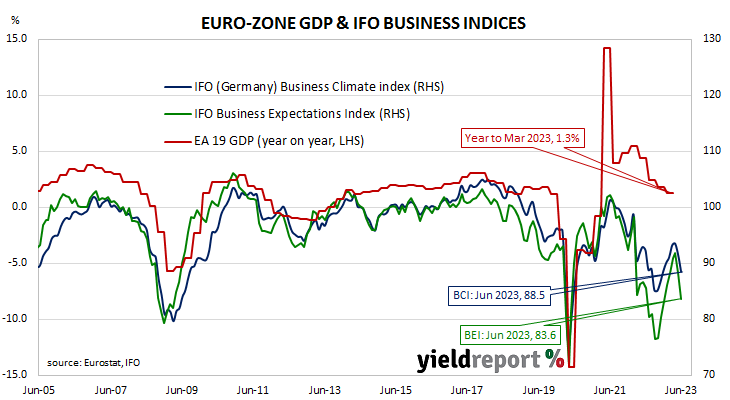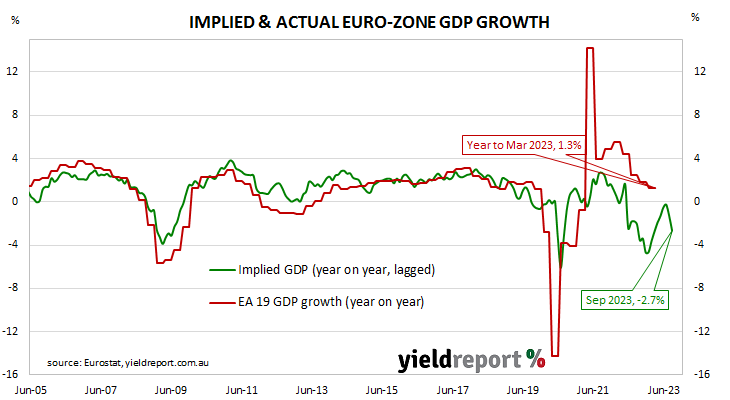Summary: ifo business climate index falls again in June, below expected figure; “steering the German economy into turbulent waters”; current conditions index, expectations index both down; expectations index implies euro-zone GDP contraction of 2.7% in year to September.
Following recessions in euro-zone economies in 2009/2010, the ifo Institute’s Business Climate Index largely ignored the European debt-crisis of 2010-2012, mostly posting average-to-elevated readings through to early-2020. However, the index was quick to react in the March 2020 survey, falling precipitously. Readings through much of 2021 generally fluctuated around the long-term average before dropping away in 2022.
According to the latest report released by ifo, German business sentiment has had a second consecutive month of declines after increasing for the six months prior to May. June’s Business Climate Index recorded a reading of 88.5, below the generally expected figure of 90.7 as well as May’s final reading of 91.5. The average reading since January 2005 is just under 97.
“Sentiment in the German economy has clouded over considerably,” said Clemens Fuest, President of the ifo Institute. “Above all, the weakness in the manufacturing sector is steering the German economy into turbulent waters.”
German firms’ views of current conditions and their collective outlook both deteriorated. The current situation index slipped from May’s figure of 94.8 to 93.7 while the expectations index decreased from 88.3 after revisions to 83.6.
German and French long-term bond yields fell on the day. By the close of business, the German 10-year bund yield had shed 7bps to 2.30% while the French 10-year OAT yield finished 5bps lower at 2.84%.
ANZ economist Jack Chambers noted specific service segments are being affected. “Manufacturing is continuing to weaken and the effects of that are spreading to the service sector, particularly transportation and logistics,”
The ifo Institute’s business climate index is a composite index which combines German companies’ views of current conditions with their outlook for the next six months. It has similarities to consumer sentiment indices in the US such as the ones produced by The Conference Board and the University of Michigan.
It also displays a solid correlation with euro-zone GDP growth rates. However, the expectations index is a better predictor as it has a higher correlation when lagged by one quarter. June’s expectations index implies a 2.7% year-on-year GDP contraction to the end of September.



